THE INTANGIBLE HERITAGE
The 2003 UNESCO Convention for the Safeguarding of Intangible Cultural Heritage defines "intangible cultural heritage" by all the practices, representations and expressions, knowledge and skills that communities and groups and, in some cases individuals recognize as part of their cultural heritage. Such heritage, sometimes called "the living cultural heritage", covers the following areas.
Oral traditions and expressions including language as a vehicle for the intangible cultural heritage, performed arts, social practices, rituals and festival events, knowledge and practices related nature and universe, and the know-how linked to traditional crafts.
Transmitted from generation to generation, the intangible cultural heritage is permanently recreated by communities and groups depending on the environment in which they live, on their relationship with nature and on their history. Intangible cultural heritage provides people and communities a sense of identity and continuity, and the safeguarding of such heritage promotes nurtures and boosts the development of cultural diversity and creativity.
Craft :
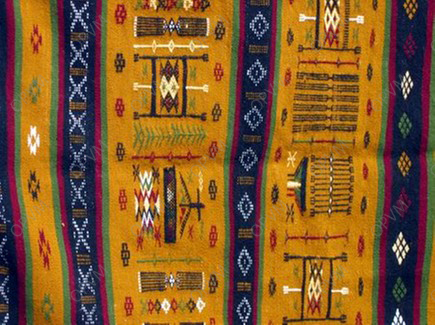
In fact, Ghardaia is known for a long time by the variety of crafts, including weaving of the carpet (high wool Carpet, flush carpets, Berber carpet, little carpets, cushions, and hambels etc.), thistraditional weaving known for its uniqueness, authenticity, its forms ... The work of wool clothing provides several types of family 'kachabias, bathrobe, Mozabite gandoura, Khomri ... another form of handicrafts: brassware, pottery, tannery…
FESTIVITIES AND MOUSSSIME OF THE WILAYA OF GHARDAÏA
THE « YENNAR » FESTIVITY :
January, Amazigh New Year: celebrated every year by preparing a sweet dish called “Arfis”.
« FOURAR » FEBRUARY :
On the edge of the spring season, the locals carry out visits to shrines and holy burial in the region where Dikr circles and donations are made on the occasion.
CARPET FEAST:
Each year during March, the region of Ghardaia famous by organizing a parade of tanks decorated with carpets from different regions of a fair of crafts, games and folk songs.
THE MONTH OF HERITAGE:
Throughout all the towns in the region and accross the Maghreb several scientific and cultural heritage are held between April 18th “Heritage World Day” and May 18th “International Day of the Museum” both decided following the Casablanca Conference in 1995.
THE BIRTH OF THE PROPHET “MOHAMED”:
This region’s popular festival is celebrated, in the presence of the inhabitants of the region, by religious hymns and family visits. In Ben Izgen, it is a tradition that the children lit oil-based torches. In addition, an amount of oil is traditionally offered to the mosque.
“AAMAR” FESTIVITY:
In early June heat, the inhabitants of Ksar move to summer residences located in their palm groves and gardens. On the occasion of this transhumance, children are dressed in traditional clothes, cleaning campaigns for palm groves are conducted under the authority of “Oumana”, an assembly of notables responsible for the management of water and traditional network distribution.
EL MENEA KSAR CELEBRATION:
The celebration of the birth of the Ksar of El Ménea feast : built up in the 10th century on a site called Taourit and classified national heritage this celebration takes place in a festive atmosphere imbued with folk groups and baroud.
COLLECTIVE MARRIAGE OR GROUPS:
The region of Ghardaia is famous for organizing collective marriage in solidarity with the poor couples.
PALM DATE COLLECTION:
This festival is celebrated through all the groves and gardens of the area where there are over 150 varieties of dates including: Bent Akbal, Tamdjouhart, Deglet nour, a fair of date is also organized.
" ACHOURA " FEAST:
It is a religious festival celebrated in the month of Mouharem of each lunar year, a dish called “Ibaoun” is prepared on the occasion, “Abianou” and “Abina Nouh” songs are sung by children, family visits are also conducted.
"ALLAY" FEAST: RETURNING FROM SUMMER RESIDENCES TO THE KSAR
In the beginning of the winter period starting from November, residents living in the palm groves return to the Ksar, a dish called
"IOUZAN CHEIKH HAMOU EL HADJ" is prepared with wheat seed and girls are dressed in traditional clothes.
EL HADJ SEASON:
Is also celebrated in Ghardaia with departure and arrival of hadjis pilgrims from and to the holy places of Islam by religious songs in the mosques and the site of El Moustadjab.
MEHRI “DROMEDARY CAMEL” FEAST:
Celebrated each year in Metlili City.
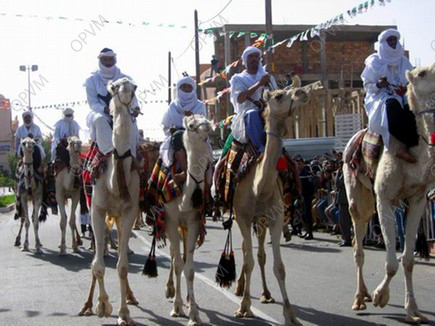
The local gastronomy presents a rich and varied range of traditional dishes and spices.
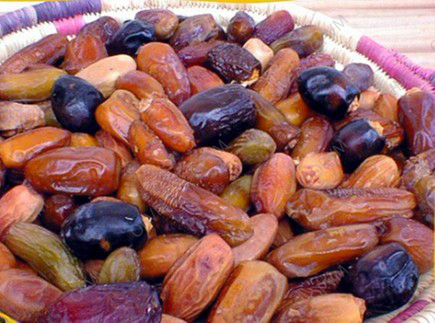 |
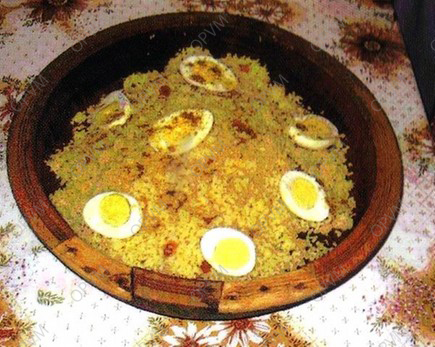 |
|


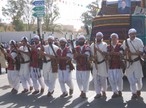

Partager cet article: